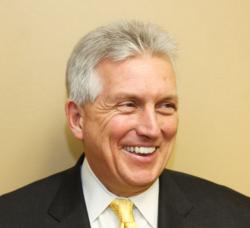Day: September 12, 2016
Starting to Think of Some Foundations as Individuals
Source: Giving USA 2016 (Highlights)
Published by The Giving Institute, in cooperation with Lilly Family School of Philanthropy
Total Foundation Giving
Last year, according to Giving USA, 16% of the total philanthropic support came from foundations. In dollars, that amounts to $58.46 billion of the total $373.25 billion.
Often, when people think of foundation giving, they also think of a process that involves a foundation board, a written proposal according to the foundation’s guidelines and where possible, a formal presentation.
Structure of Family Foundations
While that is true in some cases, in almost 50% of the cases that is not the process that is used. It is much less formal. That’s because an increasing amount of the foundation giving totals come from family foundations, and the vast majority of family foundations do not have an Executive Director or a formal process. In fact, while some foundations do have a board of directors, many of them are operated by just one or two people who make all of the decisions.
Likewise, the largest category of foundation giving is giving from independent foundations (75% of all foundation giving), which includes family foundations. In fact, in that category, more than 64% of all giving was from family foundations. That’s more than $28 billion.
Advice on the Ask to Family Foundations
However, there are a few points you should consider as you approach family foundations for fundraising support:
- Make sure you know the person making the decisions, and then try to connect with him or her through someone who is close to that person.
- Understand what their interest is and try to match your project with their specific area of interest.
- In general, foundation support for operations is declining while support for specific projects is increasing. We often tell clients to carve out specific projects from their operations and seek funding for some of those.
- Don’t just look to community foundations for support from donor advised funds. For the first time in 2015, donor advised funds managed by the top three commercial providers (24.1 billion) exceeds those funds held by 274 community foundations (22.2 billion).
Do Your Research
While all of this information is important, you must have a beginning place. As fundraising consultants, we advise clients to start by first gathering information about family foundations in their individual cities or states. That’s because a good portion of those family foundations will make donations right there in the area in which they live. It stands to reason that people tend to give to organizations or people that they know, and the closer to home they are the more organizations and people they will know.
Well, how do you find the names of people who have family foundations? A good place to start is by examining the 990 reports in your state. Each foundation must file a 990 annually. They list not only foundation assets, but also the principal, past grants, and where appropriate, any additional board members.
Of course, once you figure out how many family foundations are in your area and who runs them, the next step towards increasing donations is to develop strategies to inform, cultivate and eventually solicit these foundations. Sure it takes work, but a few hits will make it well worth the effort.

